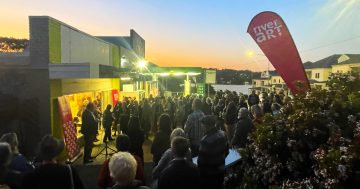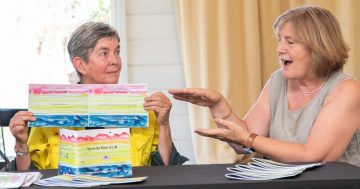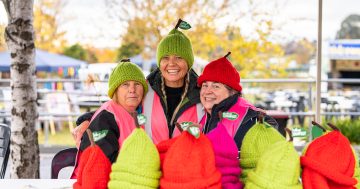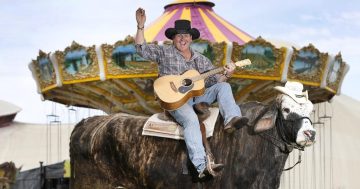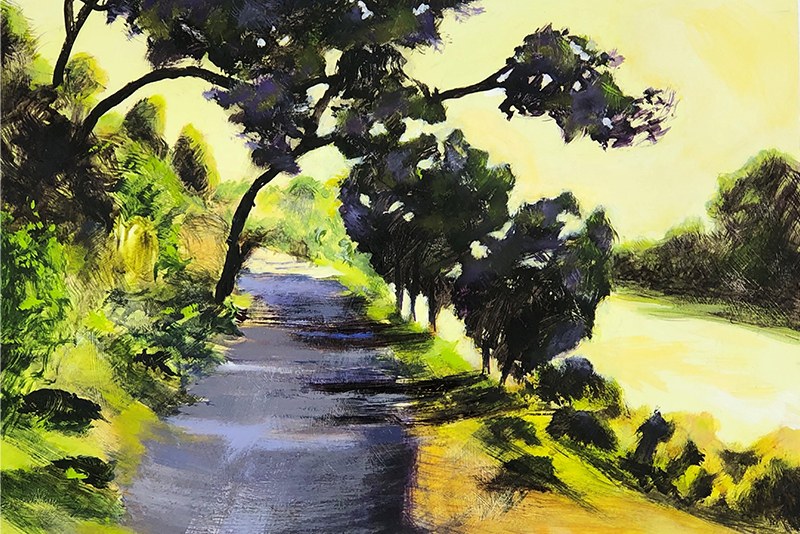
A new art exhibition at Rusten House Art Centre shows Queanbeyan River as Henry Smith sees it. Photo: Rusten House Art Centre.
Artist Henry Smith comes from Todd River in Alice Springs, which is less of a river and more of a dry and crusty gully that’s home to aimlessly wandering ants rather than swimming fish.
When he first arrived in Queanbeyan a year ago and walked along the city’s tranquil and tree-lined waterway, the experience made such an impression on him that he promptly pulled out a paintbrush and took to the canvas.
The resultant series of artworks are now on public display at a new exhibition in Queanbeyan called ‘Evocation’, at Rusten House Art Centre.
Henry is a self-proclaimed impressionist artist, and he mingles with a slightly abstract style, putting various colours, shapes and textures to work in the hope of not only capturing the appearance of a scene, but also the emotion.
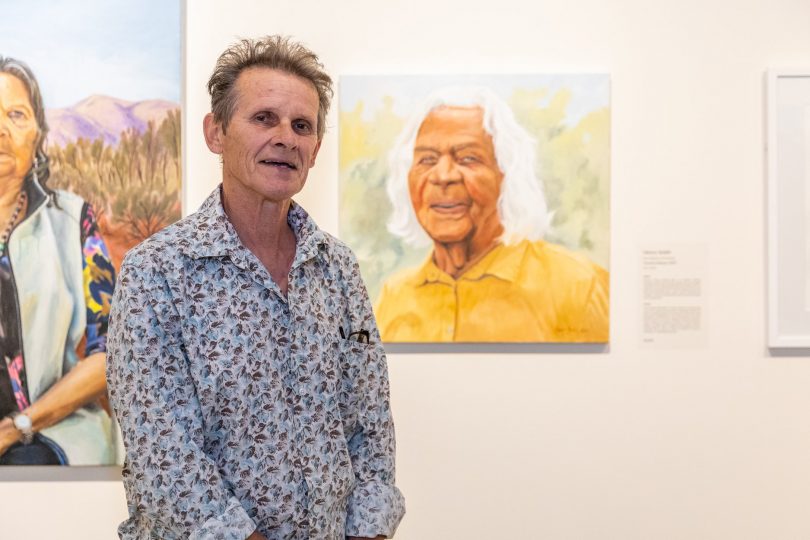
Artist Henry Smith by one of his portrait paintings in the Northern Territory. Photo: Araluen Arts Centre.
In this sense, Queanbeyan River provides ample fodder for his artwork. The flowing waterway has seen it all, from playing the literal graverobber to serving as a picturesque backdrop to community events.
The river has always been central to Queanbeyan, and not just because it runs through the centre of town. The name ‘Queanbeyan’ is taken from the original colonial name for the river, ‘Quinbean’, which is derived from a similar word the local Aboriginal Ngarigo people used to describe the river, meaning ‘clear water’.
Europeans first discovered Queanbeyan River in 1820 when a team led by Charles Throsby stumbled upon it while searching for the Murrumbidgee River. In the decades that followed, houses and businesses started popping up along its edges, turning to it for their water supply.
But the river held a dark secret which is first recorded to have reared its ugly head in 1827: it floods.
Queanbeyan River has flooded as many as 19 times since European settlement, a dozen of these have been considered ‘major events’.
That equates to the river flooding about once every 10 years.

Queanbeyan River babbling away on a good day. Photo: James Coleman.
It claimed its first life in 1925 when a painter had no sooner stepped out of his car when he was swept away. The same flood also ripped into the side of the local cemetery, setting at least 100 bodies free. It also wasn’t uncommon for the surrounding main roads to end up with live Murray cod flapping about on them.
In 1974, another 100-odd bodies were dug up by roaring floodwaters and washed downstream as far as Molonglo River. Urban legend suggests some even ended up in Lake Burley Griffin. Sixty were recovered and reburied, which leaves 40 out there somewhere…
After this incident, it was decided something had to be done to rein in the river’s temperamental behaviour, and construction began on Googong Dam. But even before it could be finished, another flood came along and the sheer brunt of the water brought the whole thing to the brink of collapse.
Yet again, scores of bodies headed downstream, now on the verge of becoming a regular pilgrimage for some.
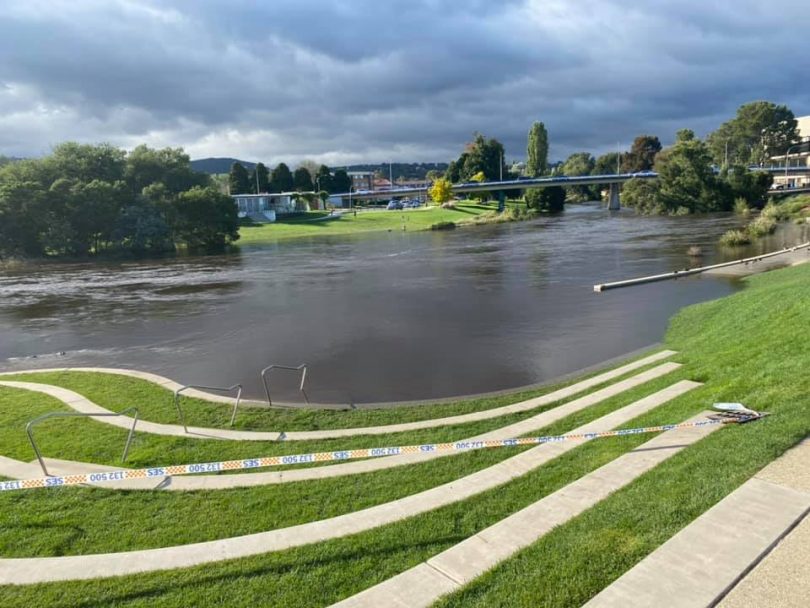
Queanbeyan River lapping at Elizabeth Park on 24 March, 2021. Photo: Queanbeyan SES.
The dam was finally completed in 1979, but the battle was far from won.
In December 2010, Queanbeyan River peaked at 8.4 metres and broke its banks, flooding everything nearby and closing all the schools in the area, while other schools served as a temporary shelter for evacuated residents of around 100 houses and businesses.
Similar devastation occurred in 2016, with the waters nearly lapping at the roof of Riverside Plaza car park.
It isn’t all bad though. The ‘Evocation’ art exhibition will focus on the river’s more peaceful role, providing a fresh location for outdoor exercise, an opportunity for fishing, and on a lucky day, a place to spot a platypus in the wild.
‘Evocation’ is on show at Rusten House Art Centre in Queanbeyan until 18 December, 2021.
All works on display are framed and for sale. Henry Smith will be giving an artist talk about the exhibition and his process on Saturday, 4 December, at 2 pm.
Original Article published by James Coleman on Riotact.








